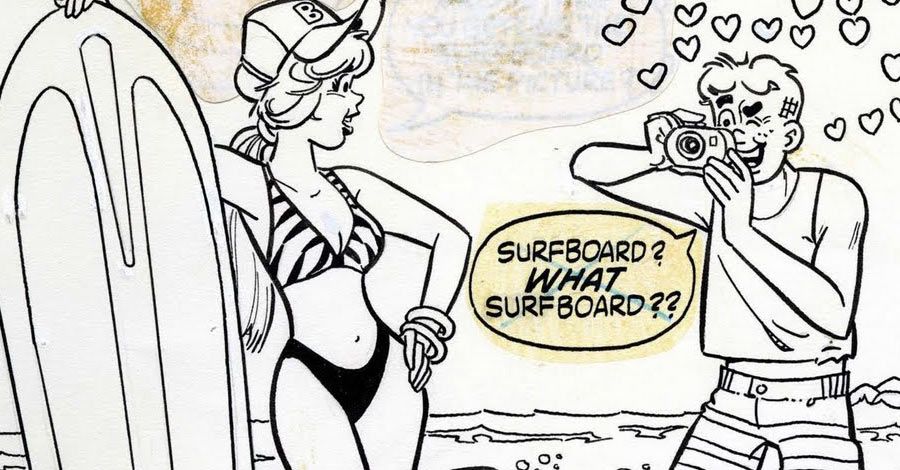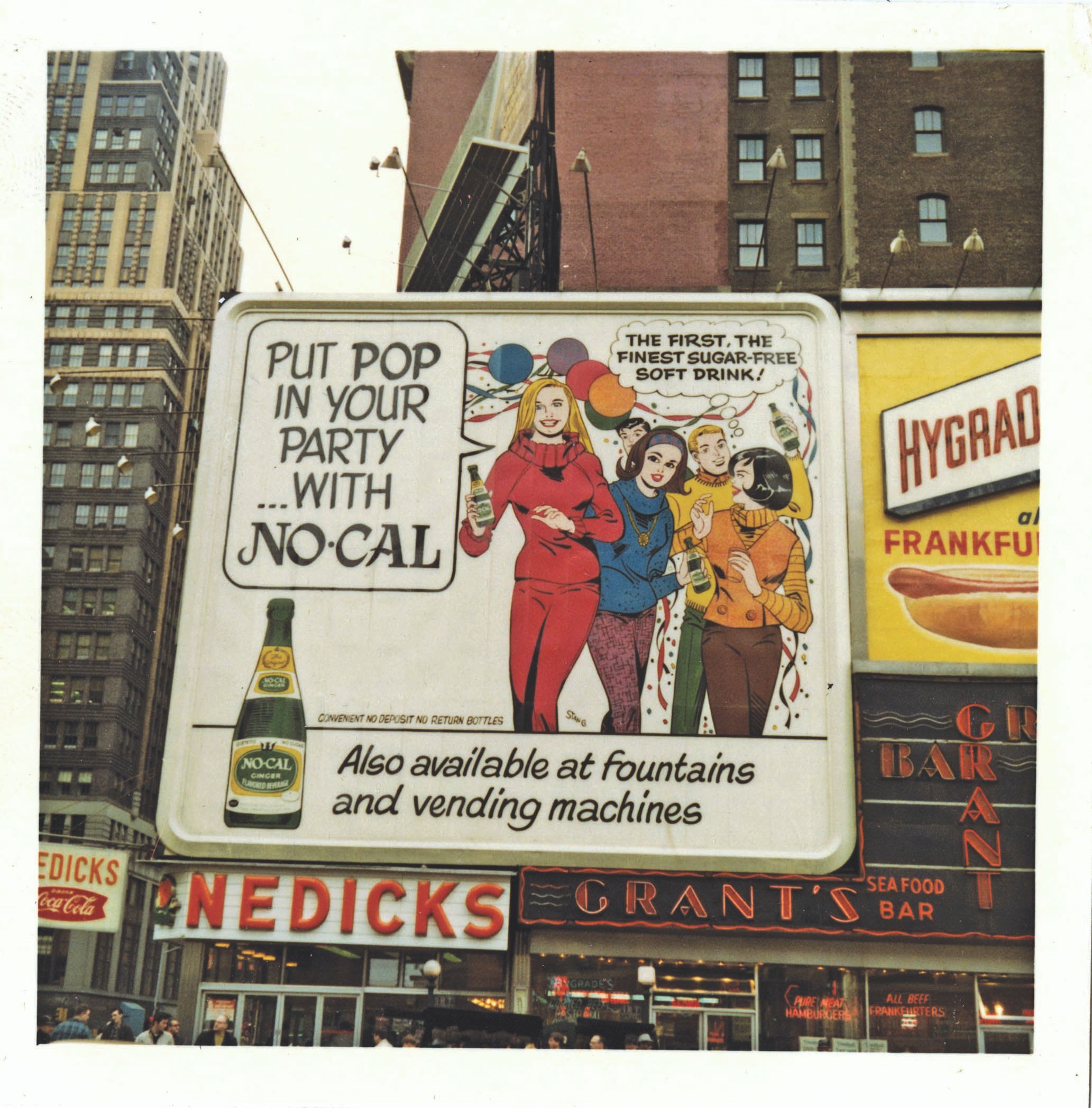Stan Goldberg may not be a household name, but if you're a comics fan, chances are pretty good you've read something he had a hand in. As a colorist at Marvel, he set the palette for Spider-Man, the Fantastic Four and other classic characters. He was a longtime penciller for Archie Comics, with one of his last projects at the publisher being the "Archie Marries..." series that spawned the game-changing "Life With Archie" storylines. Toward the end of his career, he drew Nancy Drew and Three Stooges graphic novels for Papercutz.
Goldberg died last August at the age of 82, and in one of the final panels of New York Comic Con, a group of family and friends gathered to remember the man and his work. The panel included writer/artist Al Milgrom, writer/artist John Wilcox, Papercutz Editor-in-Chief Jim Salicrup, historian Danny Fingeroth, writer/artist Barbara Slate, and Goldberg's son Stephen. The moderator was Nancy Silberkleit, co-CEO of Archie Comics and founder of the Rise Above Social Influences Foundation, an anti-bullying group for which Goldberg drew his last comic, "Rise Above."
Goldberg's wife Pauline was in the audience, and Silberkleit started by acknowledging her. "Pencil to paper," Silberkleit said. "That's how I saw Stan and his wife Pauline. Pauline was always at his side."
As a coloriist, Goldberg is best known as the man who developed the color schemes for the Fantastic Four, the X-Men and other Marvel series. "When Stan Lee wanted to make The Hulk gray, Stan Goldberg fought it because he didn't think it would work with the material," Fingeroth said. "Turned out he was right, and they made the Hulk green." Superheroes, who had to be instantly recognizable and stand out strongly from the background, were assigned primary colors (red, blue, yellow) and villains got secondary colors, purples and greens. Even working within those constraints, Goldberg had a nuanced sense of color. "People think of Spider-Man as blue and red, but actually the blue has a little red in it, so it's almost a purple blue," Fingeroth said. "I think innovations like that, and little subtleties like that, that somebody else might not have done, are what he brought to the table. And the characters still have that look."
Fingeroth read an excerpt from an interview Goldberg, in which he explained how he came to work for Marvel (then called Timely) in 1949. At the time, Goldberg had a friend named Marvin who was working in Timely's coloring department. "Marvin told me that he was going out of the country," Goldberg said in the interview. "He said, 'I didn't tell anyone at Timely that I'm not coming back on Monday, so why don't you go up there and sit in my seat? They will need somebody up there.' So I did. At that time, the coloring department was run by publisher Martin Goodman's brother Artie. So Artie Goodman walked into the coloring room, saw me, pointed a finger at me, and asked, 'Who the hell are you?' I said, 'I'm taking Marvin's place.' That's how I got the job."
Milgrom was not just a colleague of Goldberg's -- he was a poker buddy, part of a group that included fellow artists John Romita, Mike Esposito and occasionally Marvel Editor-in-Chief Roy Thomas. Milgrom helped Goldberg get some illustration work during a slow period at Archie, and Goldberg helped Milgrom when the situation was reversed. Milgrom had sent some samples of his work to Archie Editor-in-Chief Victor Gorelick, but most of them were superhero material, not the teen humor comics that were Archie's specialty. "They are really good, but I don't know if we can use you," Gorelick told Milgrom. When he heard about this, Goldberg went to Gorelick and asked him to allow Milgrom to ink some one-page gag strips he was dong. "Victor said, 'Sure,' and the next thing I knew I got half a dozen Stan Goldberg gag strips to ink," recalled Milgrom. "So I inked them, and when I sent those in, Victor said, 'Oh yeah, these are really good, we can certainly use you.' That was the first time I ever inked Stan, and it was years before I got to ink him again." Years later, Milgrom sent Goldberg some copies of work of his that he had inked. "I said, if there is anything you don't like, let me know and I'll adjust it," Milgrom said. "He said, 'No, no, it's great. I think I like your stuff better than anybody's that's been inking me.' I think that's mostly because I didn't change much. The inker's job is to make the pencils look as good as he possibly can, but not put too much of himself into it to disguise the penciller's work."
Wilcox and Slate both spoke of how Goldberg's art complemented their writing. "When it was, 'Stan's gonna draw it,' I knew whatever I wrote was going to look 100,000 times beyond what I could conceive of," said Wilcox, who wrote "Rise Above." The lead character in that book was a girl named Erica, and one day, Goldberg told him, "I've got Erica's hands." "That was important to Stan, how every character's hands moved," Wilcox said. "Not just the facial expressions, but the essence of the character. Every aspect was important to him." Goldberg and Wilcox were both fans of old movies, and old movie stars. "One day he said to me, 'Back when I was doing Betty and Veronica, Veronica had Joan Crawford's shoulders and Betty had June Allyson's shoulders,'" Wilcox said. "You may not know that looking at it, but he knew it, and it was important to him. That was the hook on a character, that she moved her shoulders in a certain way."
Slate started writing Archie comics after meeting Gorelick at a Marvel dance, and she always asked for Goldberg to draw her stories. "I would call Victor and say, 'I've finished my story. Please give it to Stan,'" she said. "In the beginning, he accommodated me, but then he kind of got used to me... and he'd say, 'Barbara, you cannot always have Stan.'" Archie writers used to do thumbnails of their scripts, and Slate said that she usually just did rough layouts for Goldberg. "He would take layouts and really make them sparkle," she said. Later on, Goldberg and Slate collaborated to create their own character, Soho Zoe, but they never got her into a comic.
In the last few years, when he was working for Papercutz, Goldberg returned to inking his own work. "Being a small company, we don't have the largest budget in the world," said Salicrup. "So it only makes sense to make it worthwhile for our creators that if we have an artist, they do both the penciling and the inking." Salicrup was also a fan of Goldberg's inking style in the "Millie the Model" comics of the 1960s and 1970s. "He was a little resistant at first," Salicrup recalled. "I think it was a matter of pride. He had been out of practice for many years, and he wanted his work to look as good as possible. In the beginning he [said], 'OK, I'll do it,' rather reluctantly, but I think the real inner artist came out, once he got into it." Salicrup compared Goldberg's inking of his own work to a writer doing a second draft. "When he went in with the inks, he was adjusting the poses a little, fixing the expressions--he was still drawing."


